Robotic lawnmower: features and range
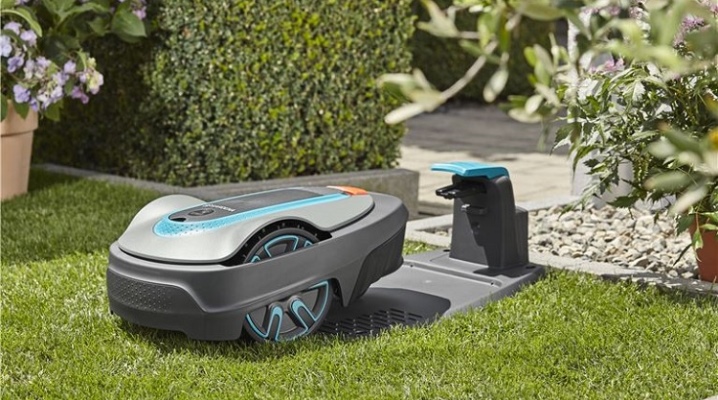
Until recently, a robotic lawnmower seemed exotic in the Russian open spaces, but today it can increasingly be found even on ordinary plots of 15 acres. According to the manufacturers' assurances, this summer cottage assistant can work completely autonomously, returns to the base without the help of the owner, and successfully cuts the grass in any weather. And yet there are more questions about the new product for the Russian market than answers. After all, the main source of information when choosing is the reviews of the owners and the results of tests, often taking place in conditions far from real.
How does a lawn mower with a grass catcher work, and how much it is necessary, is it possible to "control" the technique from a smartphone screen, which design option is better: gasoline or electric - a detailed review of robomow, Gardena Sileno and other popular automatic mowers will help you to understand everything.
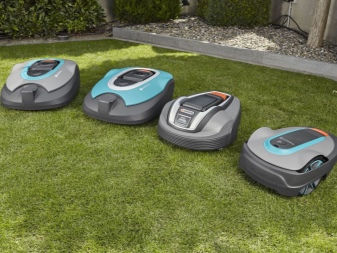
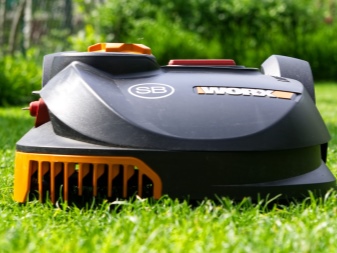
What it is?
A robotic lawn mower is a garden machine designed for fully autonomous operation. It may require a mains adapter plugged in or use a specially installed base to replenish the charge. Robotic technology is compact, practically silent. Budget models require the obligatory installation of a boundary wire - it is included in the package and is attached with pegs. The length of 150-200 m is enough to highlight the lawn and exclude the exit to its territory.
The robotic lawnmower looks rather unusual, but it copes with its tasks 100%. On sale there are models designed for different working areas and continuous mowing times. There are models with a linear and parallel motion, as well as those capable of mowing according to other patterns or maintaining a chaotic movement mode.
The list of smart technology skills depends on the number and type of built-in sensors.
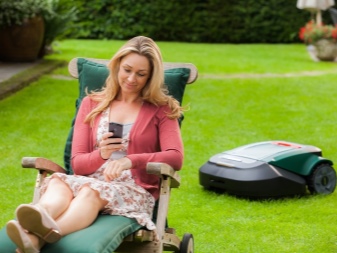
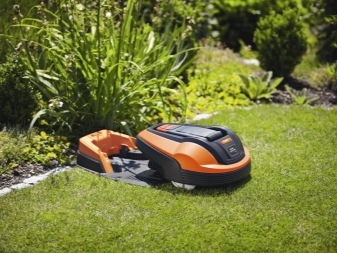
Device and principle of operation
The robotic mower is a compact self-propelled unit in a plastic case on 3 or 4 wheels. The chassis is made of metal, with a rigid rotating disc or floating propellers at the bottom for more efficient grass cutting. The package includes a control unit and a rechargeable battery to ensure autonomous operation. The grass collector in robotic mowers is not often provided - usually they immediately mulch, chop the stems, turning them into natural fertilizer.
Most of these models work according to a given mode, independently leaving the base during programmed hours and returning to it. The duration of work without recharging depends on the type of battery, grass moisture, terrain. A special boundary cord defines the perimeter of the mowing area.
Equipment does not drive over its borders, which is quite convenient - the obstacle sensors of such lawn mowers are poorly developed, and it can get into a pool or puddle, cut off a flower garden.
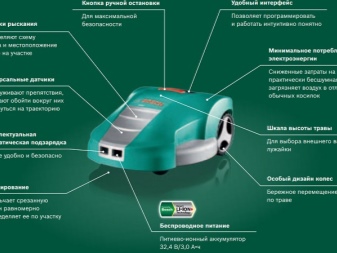
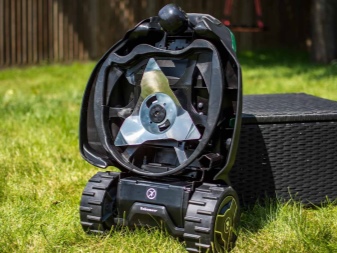
Views
Do not assume that robotic lawn mowers are fundamentally different from each other. All equipment of this class is rechargeable or runs on a hybrid power supply in combination with solar panels. There are no automatic gasoline mowers or wired robotic options - all of them are completely autonomous precisely due to the built-in battery and the processor that controls the actions of the equipment.
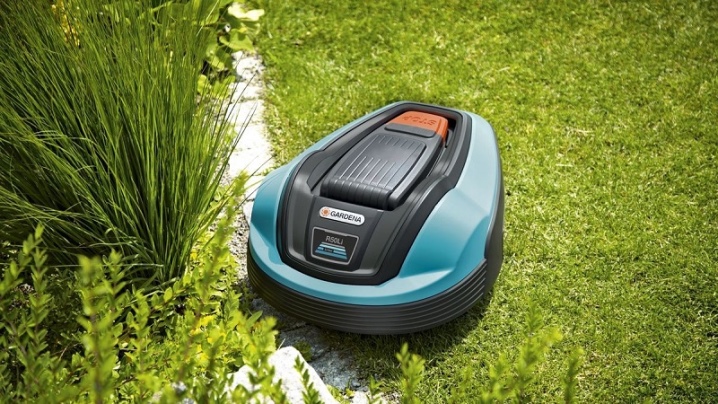
By type of control
All types of cordless robotic lawnmowers can be divided into those that are equipped with grass sensors and those that require a limiting cable. The first option is found among premium models and allows you to provide equipment with almost complete freedom of action. When entering the track or ground, the car will simply return to the grass. Such models also find a docking station without much difficulty. The best option if you need to regularly mow a lawn of 3000-3500 m2.
The presence of a boundary wire is an inevitable price to pay for the convenience of using robotic technology in a small area. They are fenced in the limits in which the autonomous assistant can move. A closed loop is formed with the involvement of the docking station, sometimes the same cable serves as a reference point along which the robot returns to the base. The cables used are green, fixed in place with special studs immersed in the soil.
Some manufacturers recommend burying the termination wire into the ground.


By way of control
Feedback is an important part of a robotic lawnmower. The simplest models are equipped with a built-in control unit or require a connection to a PC to set the operating mode. The more expensive ones have a built-in Bluetooth module, communicate with a smartphone or tablet, and are controlled from it. There are also options with a remote control that support several control methods at once - this is convenient if you need to mow a lawn of an arbitrary shape or correct noticed shortcomings in mowing a lawn.


By technical equipment
All robotic lawn mowers, one way or another, are equipped with security systems. They recognize large obstacles and change direction in the event of a collision. More expensive models are equipped with rain sensors and when it starts, they leave for the base. A waterproof housing can also be a useful option - it makes it easier to wash and clean the robotic lawnmower's body of dirt and adhering grass.
Most of this technology is rear-wheel drive. It is wise to choose models with four-wheel drive if there are noticeable differences in elevation and slopes on the site. Other useful options include protection from children and theft, plotting a site map and controlling the height of the grass - this saves you from re-rolling over an already mown area.

Rating of the best models
Among the options on the market, you can rank the robotic lawnmower models that are considered the best today.
Caiman Ambrogio L400 Elite
The premium model for professional use - the mowing area reaches 30,000 m2, is able to overcome a slope of 45%, develops a speed of up to 30 m / min. The model works without a wire limiter, mows a strip of 84 cm, has a built-in GPS positioning module, Bluetooth. Included is a tablet for managing settings, you can set a site map and specify an unlimited number of mowing zones. A professional expensive robot that can replace a gardener in caring for a large estate.


Husqvarna AutoMower 420
A robotic lawnmower for work on an area of 2200 m2, has a battery life of 105 minutes, charges in less than 1 hour. The swath width is small - only 24 cm. But in terms of its technical equipment, the model is not inferior to the flagship ones.


Robomow RS612
Robotic lawnmower model with boundary wire, Bluetooth control, mowing area up to 1500 m2. There is support for multi-zone work - up to 6 programmable areas, inclination and rain sensors included, pin-code protection. The working width is 56 cm, the equipment has 3 floating wheels, variable cutting height of the grass.


Worx Landroid M WG757E
Mower for automated lawn care up to 800 m2. The mowing width reaches 18 cm, the collection box is included, there is a 150 m cable included, the mulching function.The equipment overcomes a slope of up to 35%, it works on battery power for more than 60 minutes, and automatically returns to the station.


Robomow RC308
A simple garden model that supports operation from the remote control (without a limiting cable) and within a closed loop - 200 m of wire included, there are 250 pegs, the built-in display is not very informative, but you can control the equipment using a smartphone or tablet. The robotic lawnmower has mulching.

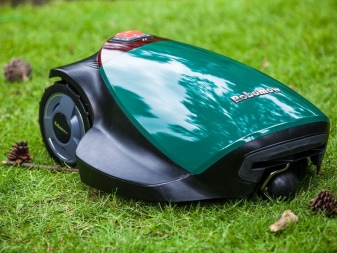
Gardena Sileno City 500
Simple and reliable rear wheel drive robotic lawnmower. It is capable of servicing a plot of up to 500 m2, overcomes a slope of up to 25%, rear grass discharge, no mulching. The model comes with a 150 m wire and 200 pegs; additionally, a return cable to the base is required.
The control is carried out through the built-in LCD display and a panel with selection and navigation buttons on the body.


Caiman Ambrogio L60 Deluxe
A robotic lawnmower for a small (up to 200 m2) lawn, with the possibility of autonomous operation up to two hours. Fully automated, no boundary wire is required due to the built-in grass sensor. The technique optimizes work on already mowed areas of the lawn, which extends the battery life, a model with four-wheel drive, suitable for steep slopes. Control from two buttons on the body, cutting width 25 cm, recharging is carried out in manual mode, with the transfer of equipment to the socket.


Selection recommendations
When choosing a robotic lawn mower, you should definitely pay attention to a number of important parameters.
- The presence of a boundary wire... It is found in all budget models, but more expensive versions use different control methods. The technique without boundary wire is more versatile, suitable for work on areas of 3000 m2 and more.
- Cutting tool type. The tiller copes well with mowing grass with tough stems and mixed plantings. For a classic lawn, free-floating knives are more suitable.
- The presence of obstacle sensors. They help the robotic lawnmower not drive into a wall or stone, or stop when approaching a person or animal.
- Swath width... The larger it is, the faster the work goes, and the more economical the charge is consumed.
- The presence of an automatic power detector. Premium models are equipped with this option. It is useful if the grass on the object is heterogeneous in height and density.
- Battery capacity and type. The duration of autonomous work and the overall service life of the equipment depends on these parameters. Husqvarna has a Solar Hybrid model with solar panels and a nickel-magnesium built-in battery. Most other models have Li-ion power supplies, Worx has lead-acid technology.
- The presence of a charging station included. It greatly simplifies the life of the owner of the site - you do not need to look for a discharged lawn mower among the plants, carry it to the outlet. The unit will get to the place by itself and start charging.
- Bevelling function... It is important because it allows you not to modify the appearance of the lawn with a trimmer - all the grass will be the same height.
- Having a service center within reach. Robotic technology is still a novelty even for Europe, so a defect occurs, and it is better to identify it without waiting months for the seller's decision to send the mower to the plant.
Using these recommendations in practice, you can easily select a robotic mower for your site and fully automate the process of getting rid of excess grass.



Instructions for use
Before you start mowing the lawn with a robotic lawnmower, you should pay attention to the recommendations for its operation. The technique needs some preparation for work, it requires maintenance. The standard instruction looks like this:
- after purchase, the unit is installed on a docking station for recharging;
- if there is a boundary wire, it is installed and connected to the power supply, but if you plan to move the lawn in the future, it is better to immediately take a model with programmable lawn coordinates;
- install the timer program, set the parameters of the equipment;
- start the robotic lawnmower, make sure everything is working as usual.
During operation, you will have to periodically clean the deck and body from dirt, as well as replace or sharpen the knives. The electrical contacts of the mower and the base will have to be freed from accumulated dirt from time to time. At the end of the season, the unit is completely cleaned and set up for seasonal storage with a fully charged battery.


Review overview
Robot lawn mower owners generally rate their experience of "getting to know" these garden devices positively. Moreover, a higher opinion is awarded to models that move not according to a strict scheme, but chaotically - as a result, it is possible to get an even lawn without stripes. Among the obvious advantages, the almost silent operation of battery technology is also noted. The premium models have a rather powerful battery for long-term continuous operation throughout the day - such a "smart" technique is completely autonomous, returns to the base when the charge is fully depleted.
Reviews of cheap models are less enthusiastic. They do not have rain sensors, which greatly reduces the quality of the mowing area. In addition, it is often not possible to set a work schedule. Wireless GPS models are more convenient for areas where multiple cutting operations are required and a patchy lawn needs to be mowed.
In other cases, it is enough to lay the control wire along the ground or dig a small trench for it.


Models without a base station are more difficult to maintain and require a port to recharge. Versions with support for control via Bluetooth are quite convenient for control from a tablet or smartphone. In addition, among the useful functions, there is a child lock, which makes it possible to exclude an accidental start of equipment. The owners also consider convenient control from the remote control. And on models worth more than 100,000 rubles, you can also find an anti-theft system.
In the next video, you will find a comparison test of robotic lawn mowers.



































































The comment was sent successfully.